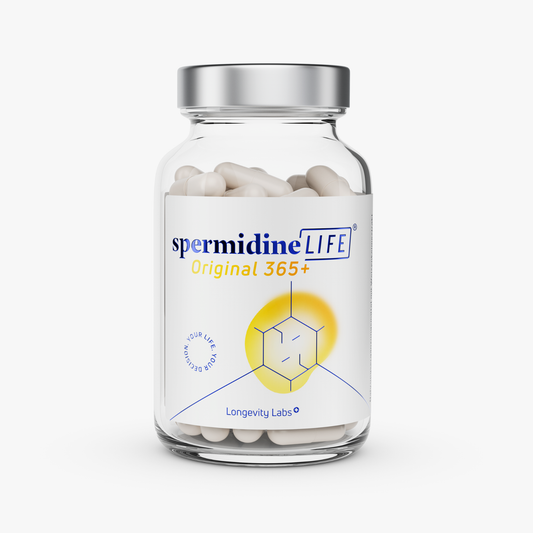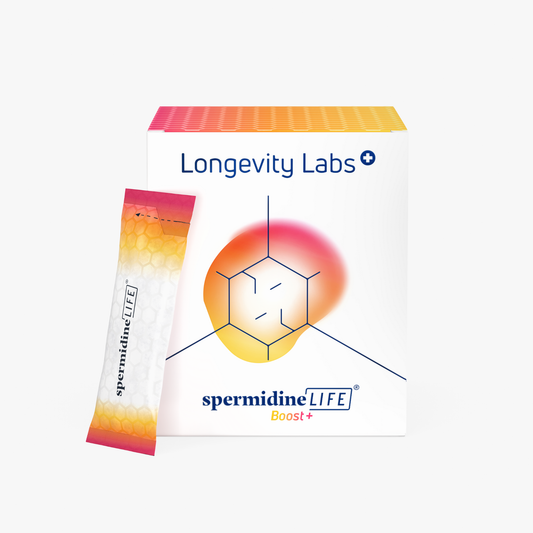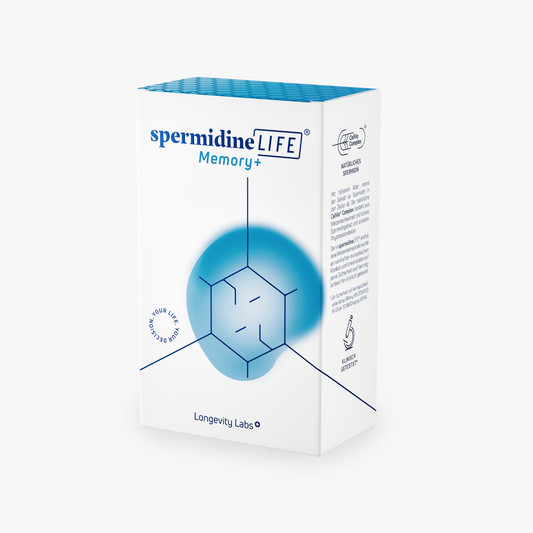
How spermidine got its name
Science, TLL LongevityLabsSpermi-what? The name "spermidine" sometimes invites a confused look or a giggle - but of course our products have nothing to do with male seminal fluid. The polyamine (which can be found in all animal and human cells, but also in some foods) was merely isolated from seminal fluid for the first time in 1870 - and simply named after it.
Get ready for some bad jokes and a few smirks, because today we're going to talk about the thing that has certainly caused frequent discussions about our products: Our name. In doing so, of course, we didn't just make a joke. Instead, the explanation is very simple: the original naming of spermine (a final product of the polyamine spermidine) took place in 1870, when Philipp Schreiner was able to isolate it from male seminal fluid. Of course, he did not know at that time that the polyamine spermidine is present in all our cells as a precursor of spermine, so it was simply named that.
What spermidine does in our body
It was not until years later that it was discovered that spermidine, whose function was initially completely unknown, is present not only in sperm but in all human and animal cells and is very much related to cell growth. Even though the exact function of spermidine in growing cells has not been 100% researched to date, it can be clearly stated that spermidine is present in the highest concentration where cells grow, work and change the most. So is it any surprise that the concentration in seminal fluid is relatively high? Hardly!
Therefore, it also makes sense that the spermidine concentration in our body increases when our metabolism is stimulated. That is, while we are still growing, during pregnancy, after exercise, or even during certain inflammations, our body reacts by causing spermidine levels to rise - and this is true for both men and women, regardless of gender.
At the same time, the spermidine level in the human body decreases when metabolism slows down. But that's not all: spermidine levels also decrease with age.
But let's start at the beginning
The first time spermidine (but far from named at the time) was discovered by Antoni Van Leeuwenhoek in 1678. Originally, Van Leeuwenhoek is actually known for his contribution to the further development of the microscope. And it was this advancement that made it possible for him to see a "crystal structure" in seminal fluid. For what purpose he originally devoted himself to this project, we will not question any further for now and simply look forward to the door that his discovery has opened.
The full potential of spermidine
Ahead of its time at the time, it took another 200 years for spermine (a final product of spermidine) to be named by Philipp Schreiner. And even then we were still a long way from the polyamine spermidine. Indeed, the isolation of this was not successful until years later. And since then, spermidine has begun to develop its full potential. Because it is so closely related to cellular health and metabolism, the therapeutic and health-promoting possibilities of it were quickly explored. It is therefore no surprise that spermidine is now one of the most studied molecules in the world.
For further research, however, spermidine was not used, of course, but rather spermidine from other sources, such as wheat germ, in which the concentration of spermidine is extremely high.
And since then?
It took another 100 years before it became clear for the first time what else could be possible with this small molecule. Prof. Dr. Frank Madeo, member of our scientific advisory board Frank Madeo, a member of our scientific advisory board, is considered the "discoverer" of the effect of the polyamine spermidine, on which our company, our products and all further research has been based. Thanks to him and his years of very extensive research, it is possible that only our product can be used in clinical trials and thus as a study medication has opened the door for further discoveries.
Today, more than 100 research groups worldwide are working on spermidine and everything there is to know about it in order to exploit the full potential of this small molecule. However, only our product will continue to be used for clinical studies in humans - thanks to Prof. Frank Madeo and our research and development team.
So what does this mean for us?
Does spermidine have anything to do with sperm other than the original name? No. Will the name nevertheless continue to invite jokes? Probably! But considering all the potential this polyamine has, it's definitely worth all the confusion that comes with the name, too.






